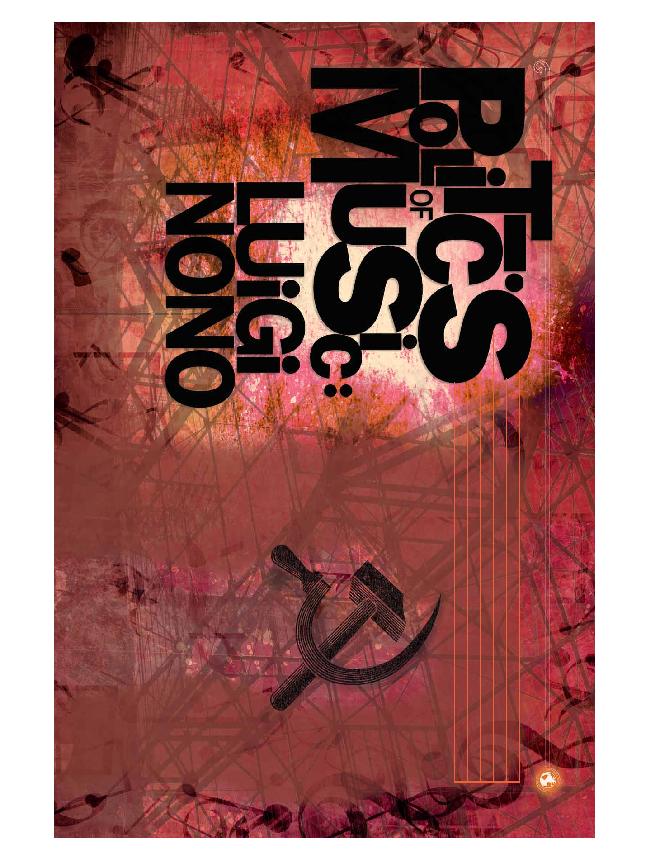
professor in the Department of Music. "When Nono
wrote it, a book had recently been published
with the last letters home of victims of
Fascism, and Nono set fragments of these
letters to music. I am fascinated by the
idea that, in writing this piece, Nono
was putting a progressive political
message in the foreground."
was just beginning to wane by the time
this piece was written -- but he was also a
lifelong Communist. Born in Venice, he
came of age during World War II but, despising
Mussolini, managed to avoid military service.
A lawyer by training, he turned full-time to music,
giving aesthetic expression to his political sympathies.
Schoenberg, whose modernist work -- using a novel 12-tone
technique -- was condemned by the Nazis. In 1955, Nono mar-
ried Schoenberg's daughter Nuria; the couple had two daughters.
Durazzi has been there, talked to her and done extensive
research; he has also pored over the letters and writings of
Nono, which have recently been published. What has emerged
from all of this is the portrait of a man who was passionately
committed to two things.
against the Germans," says Durazzi. "He also was fiercely loyal
to the legacy of composers of the previous generation whose
music he believed in."
started talking about having to find one's own way. His musical
style changed, too: Now it became very quiet and contemplative,
with a great deal of silence and open space."
Nono and his work is growing, particularly in England and the
United States, where he was long overlooked. Last year, a London
festival featured his work, and recently Durazzi attended a
conference devoted entirely to Nono's music.
upper-level course in 20th-century music; last fall, he taught a
graduate course related to his current research. But his research
on Nono allows him to explore both the life and music of a man
who wrote in the context of an important political struggle.
subjects that are complex,
obscure or challenging?
For example, why did
music theorist Bruce
Durazzi make Luigi Nono,
a 20th-century Italian
avant-garde composer, the
subject of his dissertation
and forthcoming book?
Nono's work is dissonant,
with clashing sounds;
for some people it is
written for chorus and orchestra. He begins his process of
composition with a simple melody, and then ruptures it,
shattering the continuity and increasing the music's complexity.
The voices fracture, too, into free-floating syllables.